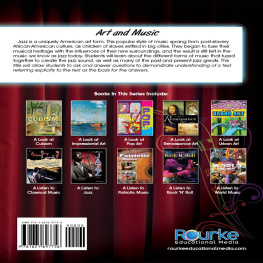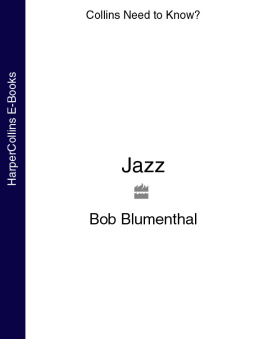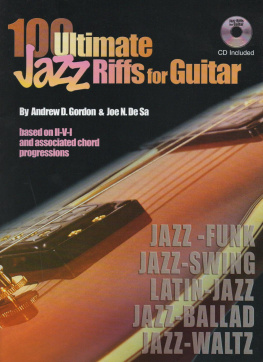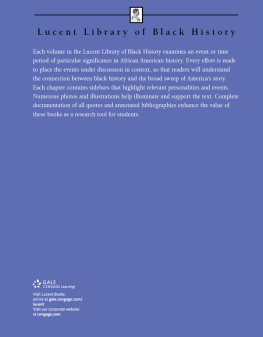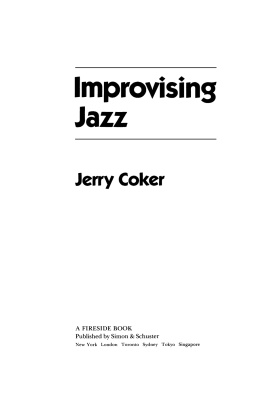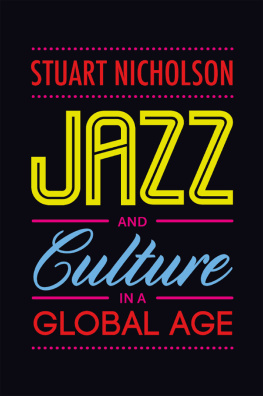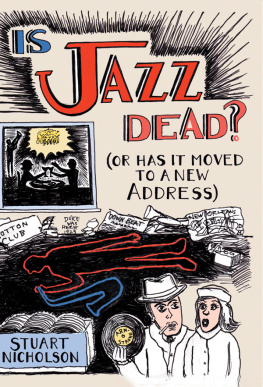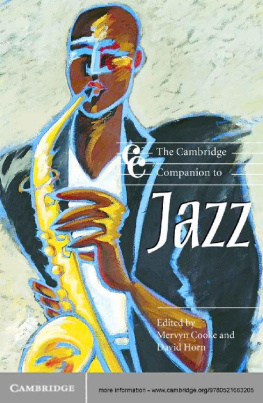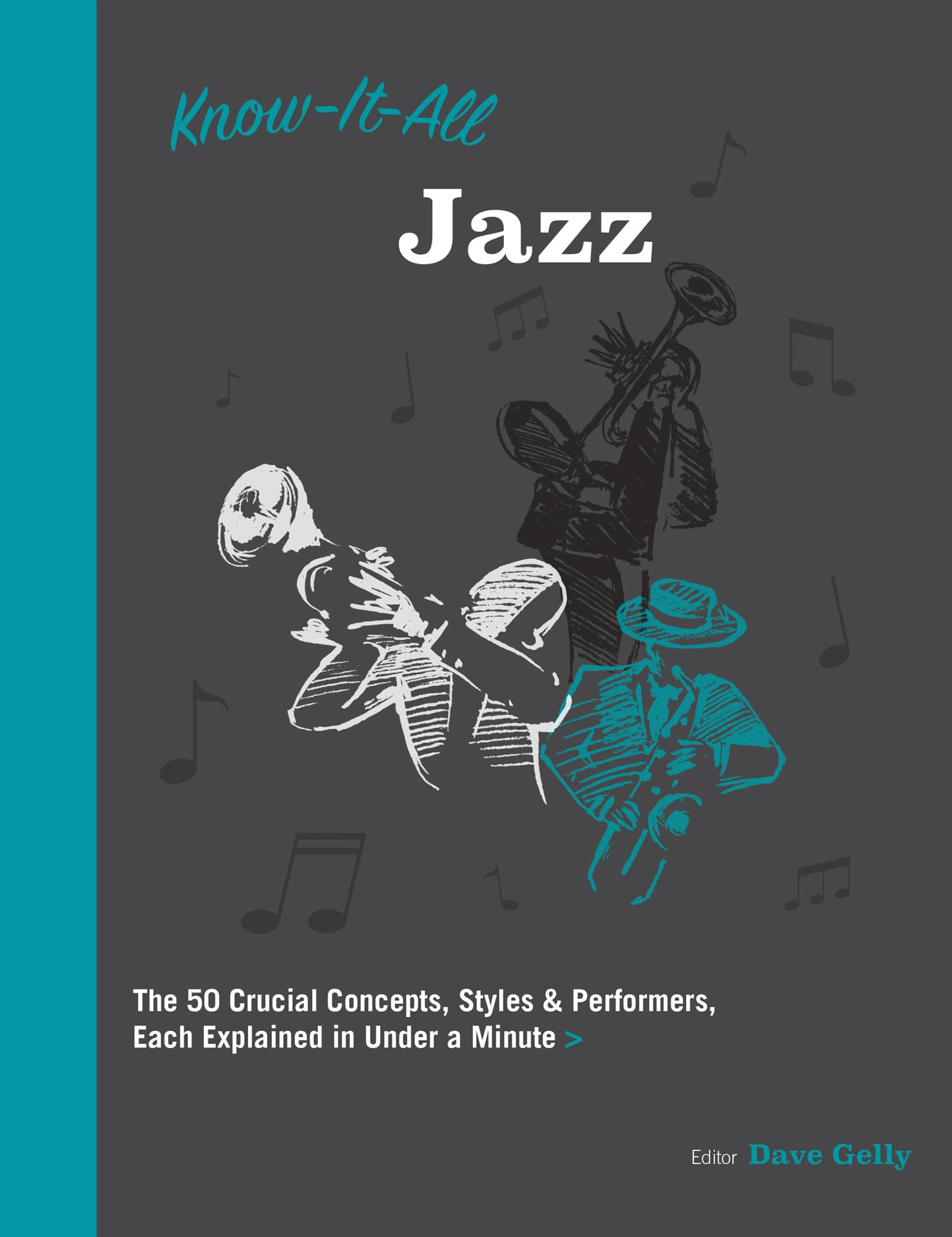We start off with The Shape of Jazz , which attempts to answer the question of how jazz worksor, to put it bluntly, how to make out whats going on in a jazz performance. The best guide here is your own ear. If you can honestly say, I like that, then any information about the item in question should add to your enjoyment and maybe point you toward something else to enjoy.
The history of jazz is like one of those speeded-up movies showing the life of a plant from seed to full flower in a few seconds. Instead of the stately parade of artistic periodsBaroque, classical, romantic, etc.jazz styles chase each other so quickly that they catch up and even overlap: swing, bebop, hard bop, fusionits enough to put any newcomer off. In Styles of Jazz , we have pared them down to the barest essentials that still make sense.
As well as understanding the shapes and styles of jazz, its always useful to know something about the instruments that make it. In Instruments of Jazz , we deal with those musical instruments that lend themselves most readily to jazz, although it is theoretically possible to play it on anythingeven the bagpipes.
An American art form,
Jazz was invented in the United States, but its appeal soon spread around the world and musicians, such as Louis Armstrong, became global stars.
The repertoire of more than a century of jazz still rests on two great musical traditionsthe Great American Songbook and the blues. Over the years, both have given way slightly in the face of other influences, but they remain major ingredients. Without either of them, jazz as we know it today would not exist. The Songbook is discussed in the chapter on Vocal Jazz , while the blues, the Siamese twin of jazz, has a chapter Jazz & the Blues all to itself.
Every form of art, even one as diverse as jazz, has its undisputed classics. In jazz, these take the form of recordings. Our selection in Classic Jazz Albums covers half a centuryfrom 1938 to 1989avoiding the earlier decades, when sound quality might prove a little off-putting, and the later years, when not enough time has elapsed to ensure classic status. They are all very well known, but everything is new to someone and their quality is undisputed.
It is impossible to draw a neat line under the story of such a dynamic, evolving art form, and any attempt to foresee the future would be doomed to failure. So in the final chapter, Today Is the Question , we leave you with some snapshots from the second decade of the twenty-first century, of an ever-changing, moving target.
Often, the easiest way for jazz lovers to describe the kind of jazz they like is to fire off a list of their favorite artists. In this book, weve kept those names to a minimum by profiling seven of the icons of the genre. Youll also find a short list of 3-Second Biographies accompanying each entry, along with a 3-Second Riff and a 3-Minute Improvisation to provide more information about the topic at a glance.
Improvisation
The pianist Thelonious Monk was a genius at improvising and is credited as one of the creators of modern jazz and bebop.

THE SHAPE OF JAZZ
THE SHAPE OF JAZZ
GLOSSARY
back line A term adopted from rock parlance, this refers to instruments and their players literally at the back of the bandtypically drums, bass, guitar, and often piano. The more commonly used jazz term for this is rhythm section.
bossa nova A sophisticated, urban form of the Brazilian samba, dating from the late 1950s and early 1960s, and much influenced by contemporary American jazz. The idiom was introduced into the United States, notably by Brazilian musicians Antnio Carlos Jobim and Joo Gilberto and American saxophonist Stan Getz. There was a brief bossa nova craze in 196364, which turned Getz into a temporary pop star. The bossa nova rhythm continues to make occasional appearances in jazz to this day.
conservatory A college for advanced musical study; sometimes also called a conservatoire.
Dixieland jazz An early style of jazz first recorded in 1917 by the Original Dixieland Jazz Band and still practiced today, mainly by white musicians.
front line Instruments and their players at the front of a band, such as brass, saxophones, etc.
Great American Songbook The notional name given to the vast body of American popular song composed during the first half of the twentieth century. A good working knowledge of this repertoire was, for many years, vital to every jazz musician. This is not always the case nowadays, but the Songbook is still a massive presence in jazz, not least because many jazz compositions are built on the underlying harmonies of old songs.
Gypsy jazz The style of jazz introduced in the 1930s by the Quintette du Hot Club de France, led by the Gypsy guitarist Django Reinhardt and violinist Stphane Grappelli. Played almost exclusively on stringed instruments, it now has a worldwide following and is a treasured part of French popular culture. Roma musicians continue to figure among its leading artists.
jam session An informal, unstructured performance by a group of musicians, organized among themselves. Although other people may be present, they are not regarded as an audience. Indeed, the purpose of a jam session is to let musicians play for one another without the distraction of having to entertain nonmusicians. The atmosphere at jam sessions can vary from convivial to highly competitive. A famous example of the latter occurred in 1934, at the Cherry Blossom Club in Kansas City, when Coleman Hawkins is said to have been routed by the cream of the citys tenor saxophonists, including Lester Young. Notable among recorded jam sessions is the series dating from 195354 organized around the trombonist Vic Dickenson, where the atmosphere is relaxed and jovial.


